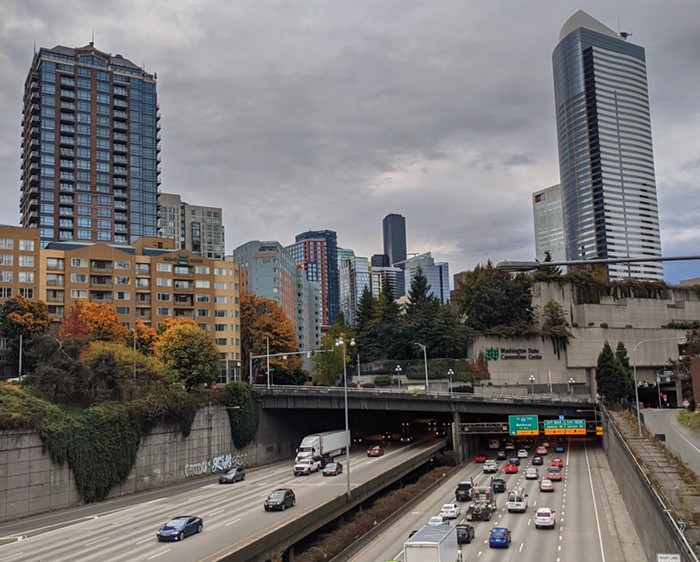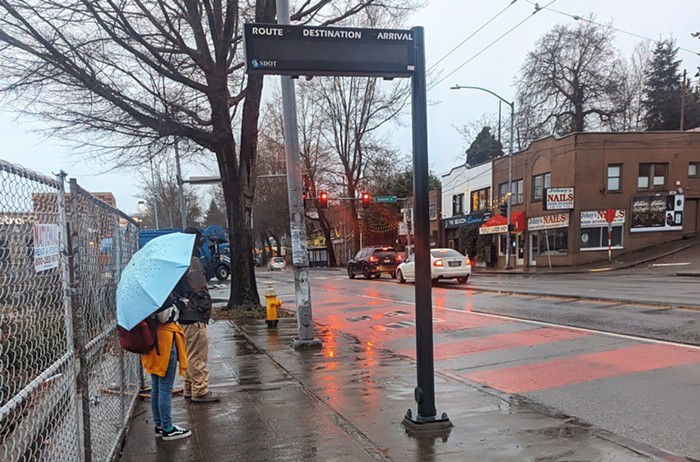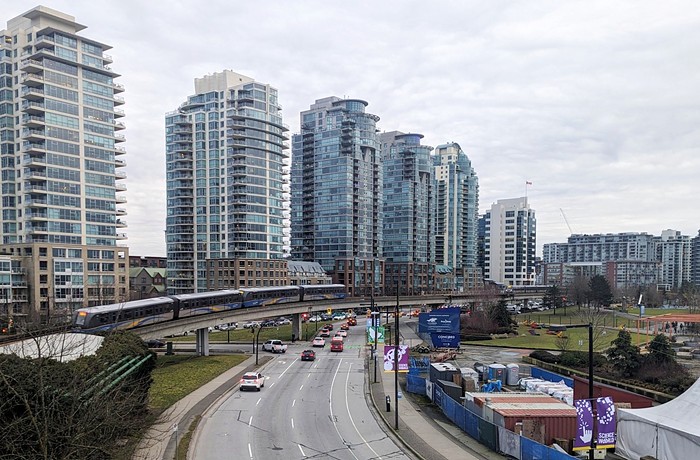
Let's consider two things in recent posts by Heidi Groover. The first post concerns Seattle’s median household income, which, according Gene Balk of Seattle Times, "broke the $80,000 mark." More amazing yet, all homes below that mark are now in the minority. And the median household income for Hispanics is $49,000 and $37,000 for blacks. This means Seattle is becoming less colorful.
The next post by Groover, "Long Live the War on Cars," has a statement Mayor Ed Murray made at the launch party for Mass Transit Now, the campaign for Sound Transit 3. He correctly pointed out that transit is a racial justice issue. The fact of the matter is more and more people of color are moving out of the expensive city, though their jobs are still in the city. If there is no rapid transit between the periphery and the center, poor and working-class people of color will continue to be pushed into cars, which are expensive to maintain and constantly get stuck in traffic.
Seattle Drivers Will Waste 66 Hours of Their Life Stuck in Traffic This Year https://t.co/NKACqc6wxz pic.twitter.com/swmDZq3oJZ
— Curbed Seattle (@CurbedSeattle) March 16, 2016
Murray's words in Groover's post:
Too many people who are African American and work in our hospitals spend hours in their cars coming from south county... Too many people I meet who work in our hotels who are East African immigrants spend too much time riding the bus—hours and hours—to get their kids into daycare and then get to their jobs. If we want to create that racially equitable Seattle, then we need to pass Sound Transit 3.You can't argue with that.
Let's now turn to NYC. If you happen to catch a 10 p.m. jetBlue flight to that great city, you will arrive at JFK around 6 a.m., watch the martian-like haze of a rising star from the windows of an AirTrain heading to Howard Beach Station, and, at around 7 a.m., board an A Train to Manhattan and find yourself staring at and surrounded by a lot of sleeping New Yorkers. They are going to work. They are not white. They are filling the shaking train with disrupted dreams. The trip to Manhattan is still 40 minutes from Howard Beach Station. Who knows how long they have already been on the train. But you do know that nothing but the overwhelming will to survive pulled them out of their beds and sleepwalked them through the dark to a subway station.
You also know that many of these sleepers earn just below or just above $3,000 a month, and that the average cost for a Manhattan apartment is $4,000 a month. Money is the reason why these people work in the center and live in the periphery. (David Harvey, the Marxist geographer, offers a few words and ideas about these daybreak subway sleepers in his first set of lectures on Das Capital.)
The point is this: Fast and reliable transit is important, but it also can maintain an unfair spatial distribution of classes and races. ST3 will help working-class people, for sure, but it will not be a fix to a spatial configuration that concentrates the rich in a core that enjoys the benefits of walking and biking distances between homes and jobs. The solution to this urban problem is not found in transportation but in housing. We need a density vision that properly includes the poor and working classes.
If you live in Columbia City or Beacon Hill, you can wake up at 8 a.m. and be at work by 9 a.m.—no problem. This will not be the case for those who use Angle Lake Station, which opens next week. That station will certainly liberate many from the predictable jams of I-5, but the trip will take 40 minutes to reach the jobs Murray described at the ST3 event. We can expect an increase of train dreamers in the months to come.



















